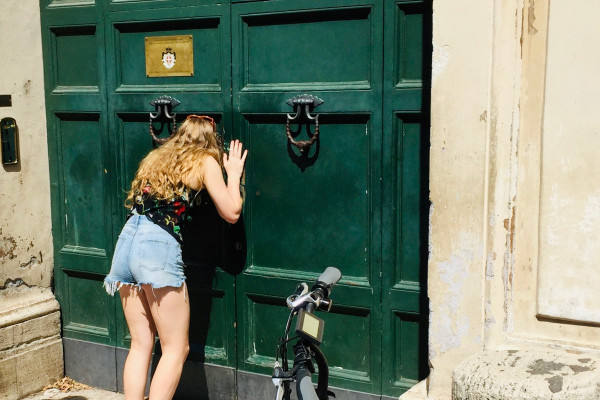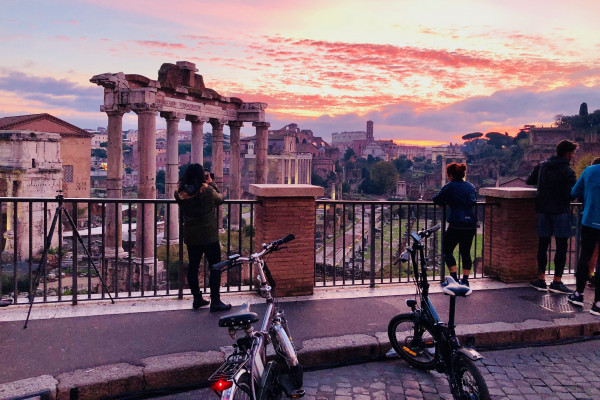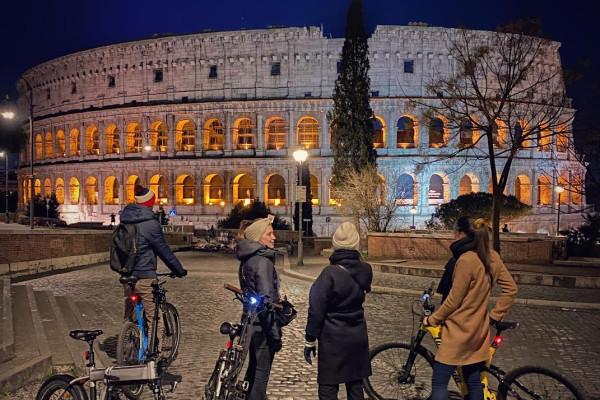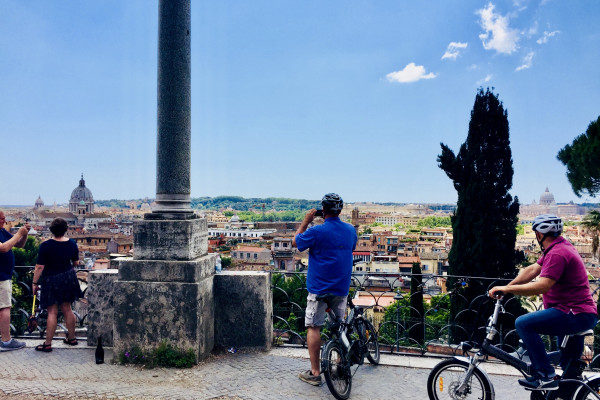Rome city bike tour: the Majesty of the Trevi Fountain
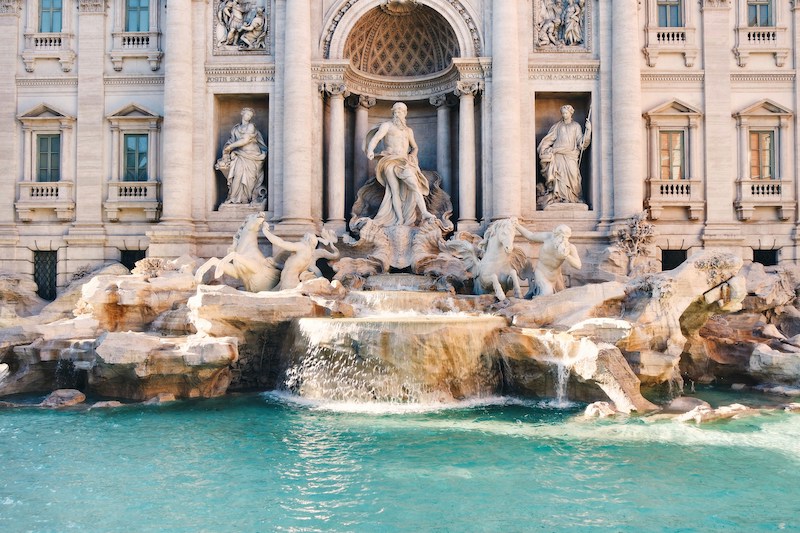
Embark on a journey with us as we unveil the timeless beauty of Rome’s iconic Trevi Fountain in a truly unique way. Our Rome City Bike Tour offers an exclusive opportunity to witness the splendor of the Trevi Fountain in the serene ambiance of dawn, away from the bustling crowds that typically fill its surroundings. Let’s find out more about this iconic symbol!
Rome city bike tour to Trevi Fountain
The Trevi Fountain is one of Rome’s most dazzling and enchanting jewels, amidst a city already rich in history and beauty. This imposing work of art, the largest among the city’s fountains, draws millions of visitors each year, captivating them with its grandeur and compelling history.
The Origin of the name
The origin of the name “Trevi” has sparked various hypotheses over the centuries. Some believe it derives from the Latin word “Trebium,” indicating the location near the Tiburtina. Others speculate it comes from “trivium,” the intersection of the three roads Collatina, Prenestina, and Tiburtina.
The History of the Trevi Fountain
Work on the restoration of the aqueduct began in 1453, a task commissioned by Pope Nicholas V following the designs of Leon Battista Alberti and Bernardo Rossellini. The fountain began to take shape under Urban VIII, who decided to replace it with a grandiose fountain and for this reason commissioned Gian Lorenzo Bernini. The architect presented all expensive projects, in front of which Pope Barberini was forced to increase taxes on wine. Many Romans, of course, opposed these measures. Consequently, Bernini had to settle for what he had already dismantled. Gian Lorenzo Bernini and Urban VIII died without the fountain being completed. For this reason, more than a century later, Pope Clement XII, with the aim of concluding the monumental fountain, invited the best artists of the time to present their projects. Among the many projects presented, that of Nicola Salvi, a Roman of Berninian inspiration, stood out. The works were started and concluded with Clement XIII, who officially inaugurated the fountain on May 22, 1762. Also, the Roman Salvi, who died prematurely, did not manage to complete it himself, but it was completed by Giuseppe Pannini. To this day, the Trevi Fountain covers the entire shorter side of Palazzo Poli for a width of 20 meters and a height of 26 meters.
The Representation of the Trevi Fountain
The Trevi Fountain is a true monumental masterpiece that is contemplated by millions of tourists every year. The central part unfolds like a triumphal arch with a large niche and Corinthian columns on the sides. At the top center is an inscription “CLEMENS XII PONT MAX,” which recalls that the realization was desired by Clement XII.
Additionally, four statues from 1735 adorn the grand work and from left to right symbolize the Abundance of Fruits by Agostino Corsini, the Fertility of Fields by Bernardo Ludovisi, the Gifts of Autumn by Francesco Queirolo, and the Pleasantness of Meadows by Bartolomeo Pincellotti.
In the deep central niche is placed the statue of Ocean positioned above a large shell pulled by two winged seahorses, one angry and the other peaceful, guided by a young and an adult Triton to highlight the different characteristics of the age of man and nature.
Finally, the lateral parts of the niche leave space for the statues of Healthiness and Abundance by Filippo Della Valle, and the reliefs represent the Virgin showing the spring to the soldiers by Grossi.
Rome city bike tour – Why throwing the coins?
There are many stories revolving around one of the most famous symbols of the capital. Among the most well-known is certainly the tossing of coins. Why throw the coin into the water? Tradition has it that if you throw a coin while facing away from the basin and then quickly turn around to catch with your gaze the moment the coin enters the water, you will surely return to Rome.
This custom traces its roots back to an anecdote from Ancient Rome when the soldiers of Agrippa’s army in 19 AD, returning to the city exhausted, under the guidance of a girl, quenched their thirst at the Salone spring, which was 20 km away from where the water now springs. From this circumstance, the fountain is also called “acqua vergine,” from the combination of the two terms “aqua” and “virgo,” the girl. Subsequently, Agrippa brought the water to the point where the monument currently stands with an aqueduct.
The Lover’s Fountain of Rome
There is another lesser-known tradition concerning the fountain, which over time has earned it the nickname “lover’s fountain.” Until a few decades ago, it was common for girls to make their boyfriends drink the “acqua vergine” before they left, sealing the moment with a toast, and the glasses were broken to symbolize an unrepeatable event, thus ensuring fidelity to the union. The architecture of the Trevi Fountain also alludes to allegorical meanings related to the sea, the ebb and flow of the waves that draw near and recede in a perpetual motion. In fact, at the center of the marble block is the god Ocean, and on the sides, two horses: one calm and one agitated, representing the two modes that the sea can assume.
Book your Rome city bike tour today!
Keep reading:
Book With Extra Flexibility
Choose new departure dates if your plans change.
Reach out to us anytime via online chat, phone or email.
Get credit for future trips if you need more time to decide.
Change to a different tour run by the same tour operator.



